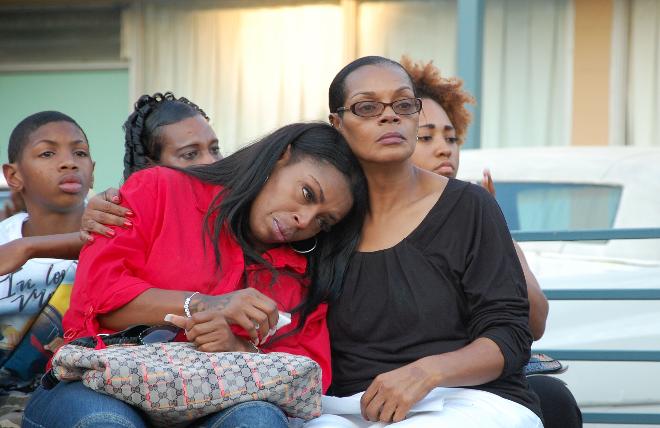Suicide ruling doesn’t end questions in Ark. case
Share
Explore Our Galleries
Breaking News!
Today's news and culture by Black and other reporters in the Black and mainstream media.
Ways to Support ABHM?
By Jeannie Nuss, The Associated Press
MEMPHIS, Tenn. (AP) Hours after police released an autopsy report that ruled the shooting death of a young man in the back of a patrol car a suicide, dozens of the man’s supporters and relatives gathered Monday night in Memphis for a candlelight vigil.

The report from the Arkansas state crime lab says Chavis Carter, 21, tested positive for methamphetamine, anti-anxiety medication and other drugs. It ruled his death a suicide and says the muzzle of a handgun he apparently concealed from arresting officers was placed against his right temple when it was fired.
Instead of focusing on the newly released report, some supporters at the vigil were asking more questions. “How (did) he shoot himself in his right temple and he (was) left-handed? In handcuffs?” one of his friends, Bianca Tipton, asked.
The state crime lab report, released to The Associated Press and other news organizations under a public records request, didn’t answer that question. Instead, the report says Carter’s death was ruled a suicide based on autopsy findings and investigative conclusions from the Jonesboro Police Department, which has faced questions from Carter’s family and community members about the circumstances surrounding the July 28 death.
“He was cuffed and placed into a police car, where apparently he produced a weapon, and despite being handcuffed, shot himself in the head,” the report says. The report also says Carter’s blood tested positive for at least trace amounts of the anti-anxiety medication diazepam and the painkiller oxycodone. His urine test returned a positive result for marijuana.
Benjamin Irwin, a Memphis-based lawyer representing Carter’s family, declined to comment Monday afternoon on the specifics of the toxicology report, calling instead for police to release details of any gunpowder residue or other such tests.
“If those tests were taken … what were the results?” Irwin asked.
We cover more stories like this in our breaking news archive.









Comments Are Welcome
Note: We moderate submissions in order to create a space for meaningful dialogue, a space where museum visitors – adults and youth –– can exchange informed, thoughtful, and relevant comments that add value to our exhibits.
Racial slurs, personal attacks, obscenity, profanity, and SHOUTING do not meet the above standard. Such comments are posted in the exhibit Hateful Speech. Commercial promotions, impersonations, and incoherent comments likewise fail to meet our goals, so will not be posted. Submissions longer than 120 words will be shortened.
See our full Comments Policy here.